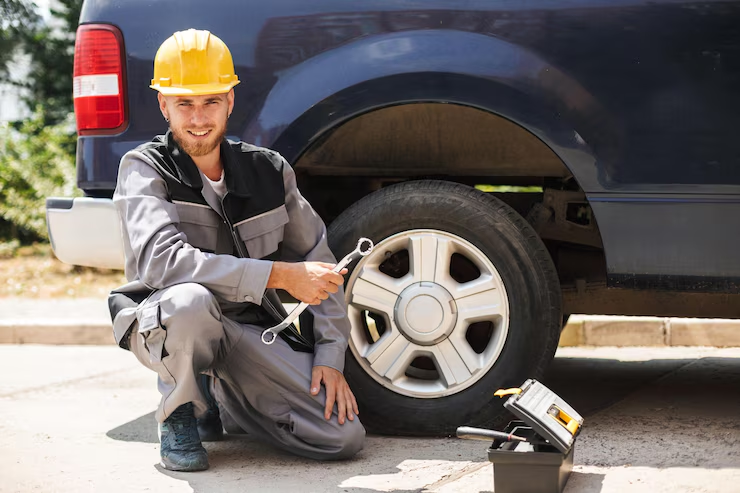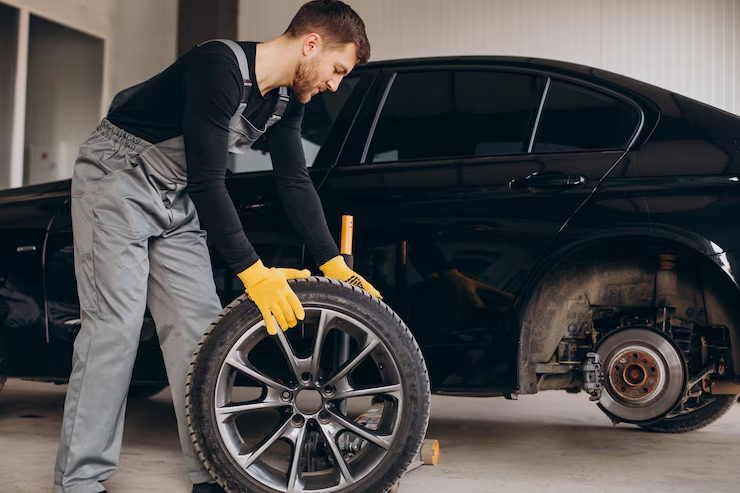Introduction
Few things are more frustrating for car owners than discovering their tires are already worn out—sometimes even before hitting the mileage promised by the manufacturer. Whether you drive a family sedan, a high-performance sports car, or an electric vehicle, tire wear is inevitable—but excessive, uneven, or premature wear is not.In this article, we’ll explore why tires wear out so fast, what causes it, and—most importantly—how you can extend their lifespan with some easy and often overlooked fixes.

Why Do Tires Wear Out So Quickly?
Tires are made from rubber compounds designed to grip the road, but they are also constantly battling heat, friction, road debris, and weight. Several key factors contribute to faster-than-expected wear:
Poor Wheel Alignment
Misaligned wheels cause uneven contact with the road surface, leading to premature wear on one edge of the tire
Incorrect Tire Pressure
Under-inflated tires: More surface area touches the road, causing shoulder wear.
Over-inflated tires: The center wears out faster due to less contact on the sides.
Cheap or Low-Quality Tires
Not all tires are created equal. Budget tires often use softer compounds or less durable construction, which reduces lifespan.
Aggressive Driving
Hard braking, rapid acceleration, and fast cornering all increase heat and stress on tires.
Worn Suspension Components
Damaged shocks, bushings, or tie rods can cause tires to bounce or lose consistent contact with the road.
Climate and Road Conditions
Hot climates soften the rubber, increasing wear.
Cold climates cause brittleness and cracking.
Rough roads and potholes damage tires and alignment.
Torque and Power Delivery (Especially in EVs)
Electric vehicles often wear out tires faster due to:
Instant torque delivery
Heavier battery packs increasing overall weight
Common Types of Tire Wear Patterns
Understanding how your tires wear tells you a lot about what’s wrong:
| Wear Pattern | Likely Cause |
| Center Wear | Over-inflation |
| Shoulder Wear | Under-inflation |
| Cupping/Scalloping | Bad shocks or unbalanced tires |
| Feathering | Misalignment |
| One-Side Wear | Incorrect camber angle |
The Fix: How to Make Your Tires Last Longer
Tire life isn’t just about the tire—it’s about how the entire vehicle is maintained. Here are proven strategies to maximize tread life:
Maintain Proper Tire Pressure
Check tire pressure monthly,Use a digital tire gauge,Inflate to the manufacturer’s recommended PSI (found on the door jamb sticker, not the tire sidewall)
Rotate Your Tires Regularly
Rotate every 5,000 to 8,000 miles,Use proper rotation pattern (e.g., front-to-rear or cross-pattern, depending on drivetrain)
Get Wheel Alignments
Have alignment checked once a year, or whenever you notice:
Pulling to one side,Uneven tread wear,Steering vibration.
Balance the Tires
Unbalanced tires cause vibration and uneven wear
Balance during every tire rotation or after hitting a pothole
Drive Gently
Accelerate smoothly,Avoid hard braking unless necessary,Take turns without aggressive cornering.
Inspect Suspension and Steering
Have shocks, struts, bushings, and tie rods inspected every 20,000–30,000 miles
Replace worn components promptly
Choose Quality Tires
Buy from reputable brands (Michelin, Continental, Bridgestone, Pirelli)
Consider UTQG ratings (Treadwear, Traction, Temperature) when shopping
Bonus Tips for EV Owners
EVs are heavier and deliver instant torque, so tire wear is even more critical.
EV-Specific Tips:
Choose EV-specific tires designed for durability and torque loads,Rotate tires more frequently,Monitor regenerative braking settings, which can affect tire load,Invest in low rolling resistance tires for efficiency and longevity.
Signs It’s Time to Replace Your Tires
Don’t wait until it’s too late. Look for:
Tread depth less than 2/32” (Use a penny test: if you see all of Lincoln’s head, it’s too low)
Cracks or bulges on side walls.Uneven wear or exposed belts,Tires older than 6 years (even with good tread)
Tire Longevity by the Numbers
| Driving Style / Maintenance | Average Tire Lifespan |
| Aggressive, poor maintenance | 15,000–25,000 miles |
| Moderate use, fair upkeep | 30,000–40,000 miles |
| Conservative driving, good maintenance | 50,000–70,000 miles |

Conclusion:
If your tires are wearing out too fast, there’s almost always a fix—and it starts with attention to detail. With proper pressure, alignment, quality tires, and smooth driving habits, you can save money, improve safety, and reduce environmental waste by making your tires last their full lifespan.It’s not just about what tires you buy—it’s how you treat them from day one. So, the next time your tire shop tries to sell you a new set too early, remember: you might not need new tires—you might just need new habits.

